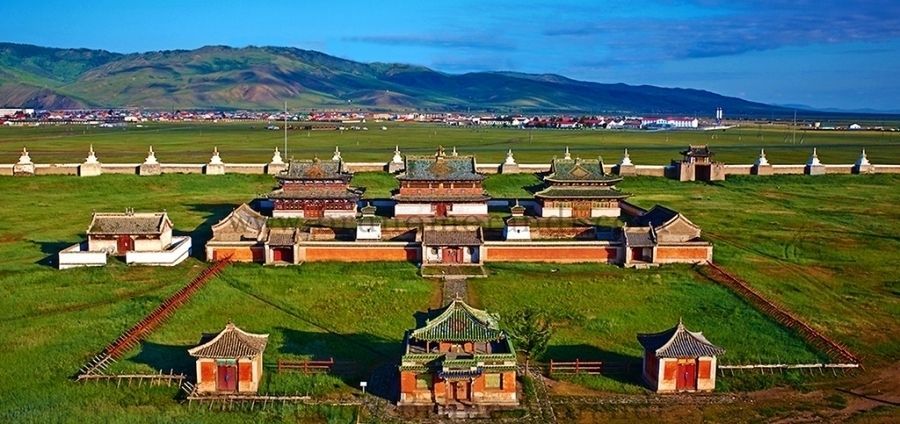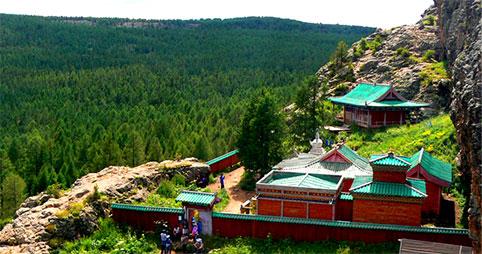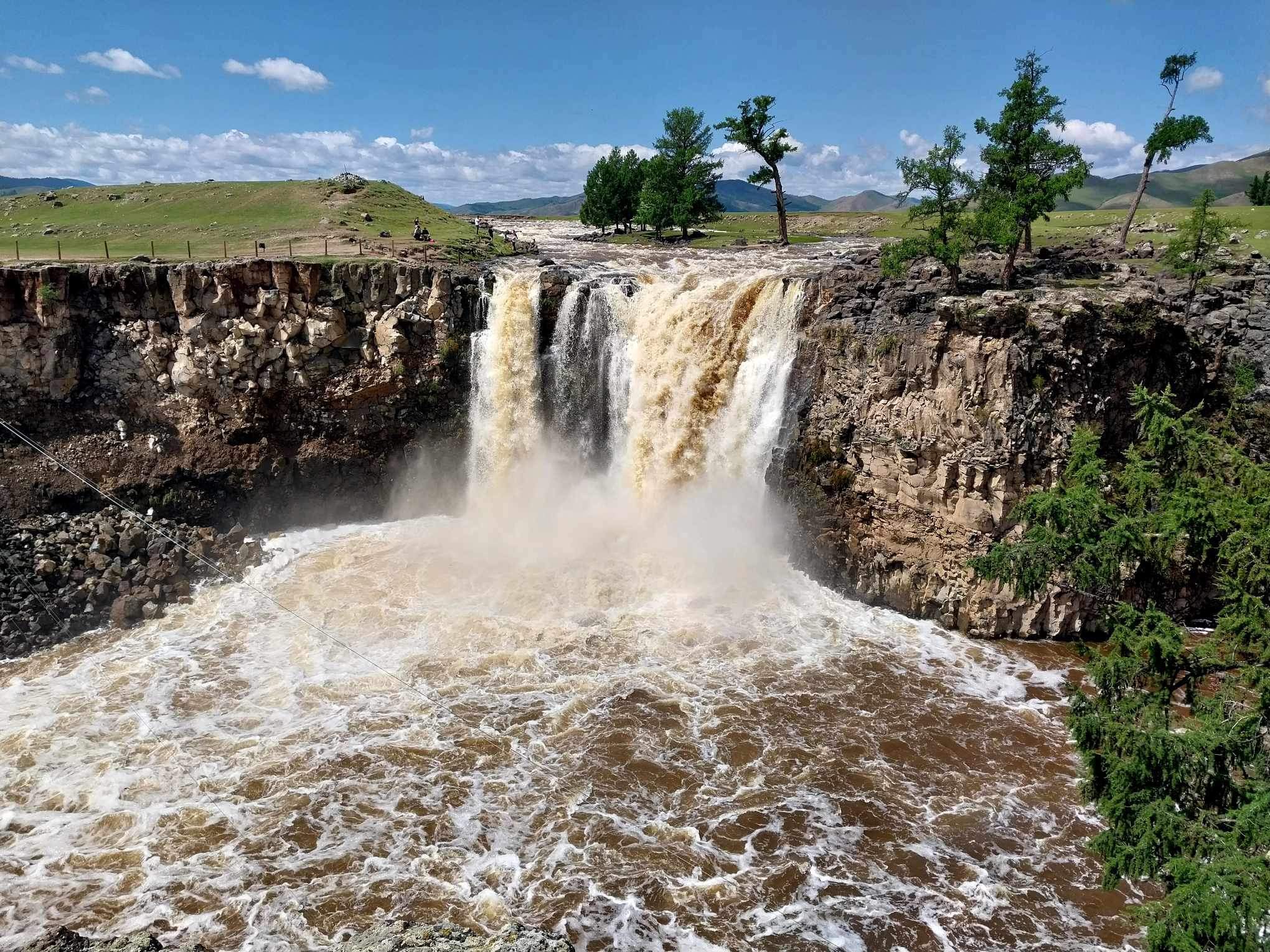Please enjoy your tailor made trip with our experienced guides .
Under the decree of Genghis Khan, the city of Kharkhorum was chosen as the capital of the Great Mongol Empire in 1220. At that time, it served as a political center, a hub for trade, economy, craftsmanship, religion, and culture, as well as a major junction for international relations.
After many years of searching and research to locate the site of Kharkhorum, it was first identified in 1889 by a research team led by Russian scientist N.M. Yadrintsev. The initial excavation at the ruins of Kharkhorum was conducted by Russian scientist D.D. Bukinich in 1933-1934. In 1948-1949, a large-scale excavation was carried out by a Mongolian-Soviet joint research team led by S.V. Kiselev and K. Perlee, which uncovered a significant amount of evidence indicating that the life of the ancient capital city of Mongolia continued to thrive and develop. From 1976 to 1980, a team studying Kharkhorum, led by N. Ser-Odjav, independently created a detailed map of the city’s layout and analyzed the burial sites, which proved to be crucial in studying the ethnic composition, customs, religious practices, and cultural characteristics of the city’s inhabitants.
From 1995 to 1998, a Mongolian-Japanese research team, under a UNESCO project, conducted topographical mapping of an area of 25 square kilometers at the site of Kharkhorum, at scales of 1:500 and 1:1000. They also performed geophysical studies of the subsurface structures and smaller excavations. Based on this mapping, the Government of Mongolia approved a resolution in 1997 (Resolution No. 241) to establish a protection zone for Kharkhorum covering an area of 9.69 square kilometers.
Abtai Sain Khan, ruler of the Khalkha Mongols and grandfather of Zanabazar, the first Jebtsundamba Khutuktu, ordered construction of the Erdene Zuu monastery in 1585 after his meeting with the 3rd Dalai Lama and the declaration of Tibetan Buddhism as the state religion of Mongolia. Stones from the nearby ruins of the ancient Mongol capital of Karakorum were used in its construction.Planners attempted to create a surrounding wall that resembled a Tibetan Buddhist rosary featuring 108 stupas (108 being a sacred number in Buddhism), but this objective was probably never achieved. The monastery’s temple walls were painted, and the Chinese-style roof covered with green tiles.
The monastery was damaged in 1688 during one of the many wars between Dzungars and Khalkha Mongols. Locals dismantled the wooden fortifications of the abandoned monastery. It was According to tradition, in 1745, a local Buddhist disciple named Bunia made several unsuccessful attempts to fly with a device he invented which was similar to a parachute.
Day 1: Arrival Depending on Flight Time
Day 2:
Day 3: Journey from the Sand Dunes to the Ancient Capital of Kharkhorin
Day 4: From Orkhon Waterfall to Tuvkhun Monastery
Day 5: From Tuvkhun Monastery to Ogii Lake
Day 6: From Ogii Lake to Ulaanbaatar
Day 7: Departure from Ulaanbaatar to Chinggis Khaan International Airport
Feel free to ask if you need any further assistance or additional information!
2 PAX 2596$
3 PAX 3894$
4 PAX 5192$
5 Pax+ each person 1098$
For children of a family trip
One free space for every 8 pax
Low season discount: 5-10% (could be negotiate)
Please contact us for more trip details.
ANCIENT CAPITAL OF MONGOL EMPIRE is not include challenging physical or demanding activities. Traveling in Mongolia always requires long driving through changing landscapes and scenic views. Even though, we developed the itinerary with a combination of evenly distributed daily diving and activities. The approximate daily driving is 4.5-5.5 hours. However, the driving time is subject to change due to weather and road conditions when driving on rough roads. You also cross several rivers and streams.
Tour meals are included according to the itinerary. In the countryside, ger camps serve occasional European but mainly Mongolian meals. Meat is the main ingredient for meals and is served for lunch and dinner along with vegetables, salads, and soups. There will be more meat in traditional Mongolian meals. A typical breakfast is tea or coffee, bread, jam, butter, eggs and sausage. There are some cookies, cheese, cereals, pancakes and more at some of the ger camps for breakfast. For lunch, meals include salads, Mongolian soups and a main course (pasta, rice, vegetables, beef/mutton/chicken/fish near lakes/rivers), and dessert and tea. Salads, a main course, a dessert, and tea will be served for dinner. With nomads, you will try authentic Mongolian meals. Different types of meals offered simultaneously are not customary in Mongolian tradition. If you are a vegetarian or have other dietary restrictions, please inform us in advance, and we will make arrangements accordingly. About lunch, it will be packed as a picnic. More information on Mongolia meals
During the trip, you will stay at the ger camp for 1 day and 2 days centrally located hotel stay in Ulaanbaatar. Compared to the other tourism well-developed parts of Mongolia, the ger camp are of a local standard, run by local people. Please get more information about the ger camp.
Most of our company guides are English speaking. We also have some guides who speak German, French, Spanish, Italian, Russian, and Japanese. They are all friendly, helpful and most of them were born and grown in the countryside. Therefore, they have good knowledge about every aspect of Mongolia, good at horse trekking and have at least three years or more years of guiding experience.
The tours were designed with four wheels driving Japanese SUVs driven by experienced, friendly, and good mechanic-drivers. Different car types are available upon request, and you may check the travel vehicle details at Mongolia transportation
The most suitable time is between 25 May and 10 September. During this period, the weather is warm and enjoyable. Khentii Mountain Range domains in northeastern Mongolia and is rich in rivers, streams, and wetlands. This part of Mongolia receives a relatively high prescription and tends to be cooler. The mountains have high-growing grasses and flower-carpeted valleys.
The average day temperature in June, July, and the first half of August are +25 to +28°C, and the highest is +35°C in July. Evening and night temperatures may drop by 10-22°C. The temperature could dramatically fall to +7°C if it rains. You may experience occasional chill wind and snowfalls in May, the beginning of June, September, and October. For your pre-departure preparation, please check the discovery tour packing list.
To plan your dream holiday or customize the tour exclusively for you, please checkthe things to do in different part of Mongolia and the attractions in Central Mongolia



© 2025 Asiatic Uncharted Travel. All right reserved. Developed by Mind Agency